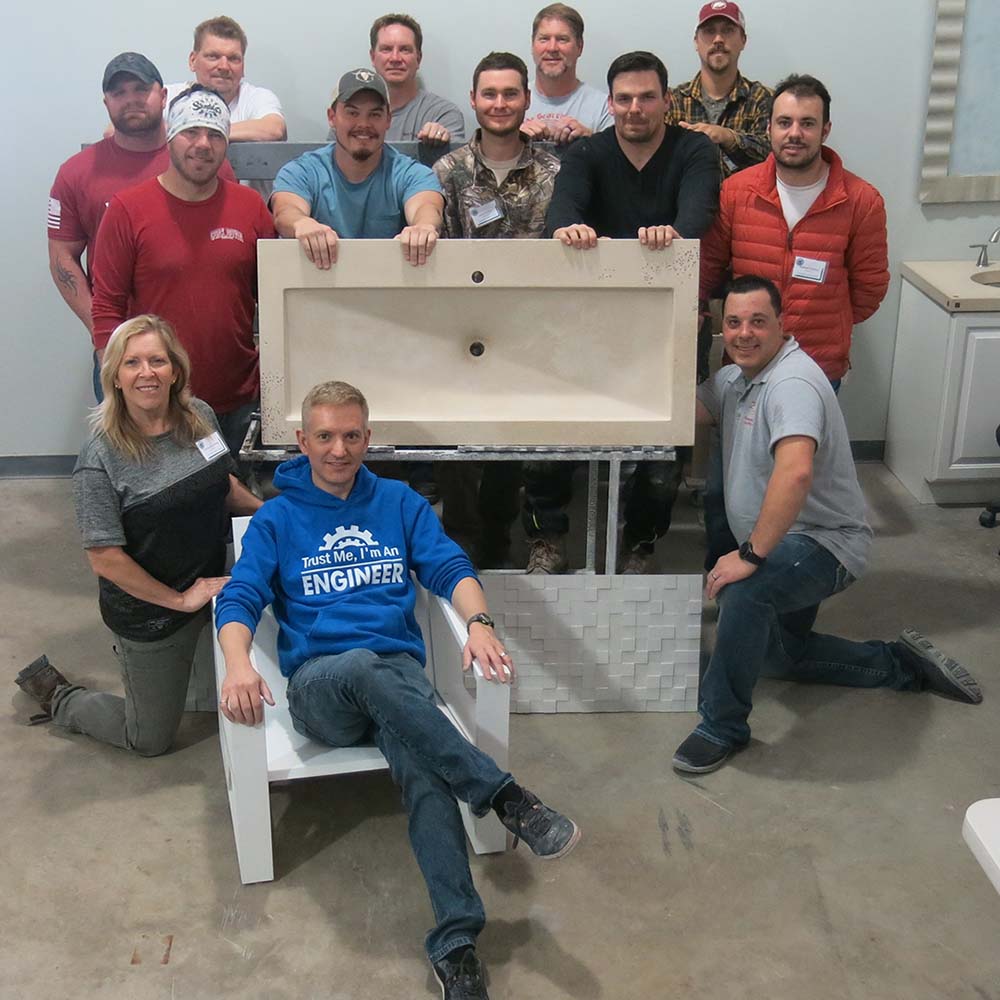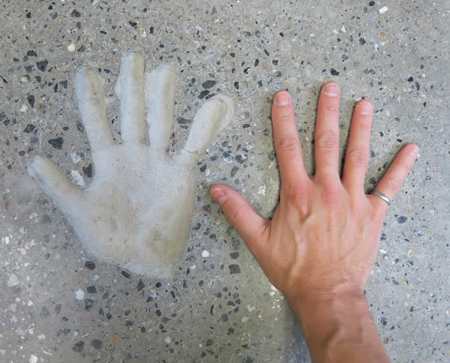Hi, I’m Jeff Girard, president and founder of The Concrete Countertop Institute. You may have read on this website that I’m an engineer. What does that mean, and why is it relevant?
To sum it up: Engineers are not out to make designers’ or construction workers’ lives more difficult. We are out to ensure that the things they design and construct actually work. Engineers make things only as complicated as they need to be so that the building or bridge doesn’t fall down.
Joking aside (although it’s really no joke – lives depend on engineering), here’s more information about what engineering is and what it means to be an engineer.
Engineers have been around for many centuries. The Egyptians had engineers to build the pyramids, and the Romans had engineers to build the aqueducts and roads. Today, engineers play a key role in our society. We invent things. We build things. We improve on what’s already here, or create something new to fill a new need. Engineering merges science, technology, design and construction, all with an eye for economics, safety and performance.
There are many different types of engineers.
- Electrical engineers work with electrical and electronic systems. They create new computer chips and build new devices that use those chips.
- Mechanical engineers design better motors and engines and machines. They also design heating and cooling systems for hospitals, schools and skyscrapers.
- Chemical engineers design the large-scale processes and industrial equipment involved in a wide variety of chemical production, such as oil refineries.
- I am a civil engineer. We design and build structures that serve society, such as airports, skyscrapers, reservoirs, bridges, railroads, canals and highways.
There are several types of civil engineers. Some of these types of civil engineers are:
- Structural engineers, who work with steel, concrete and wood to design buildings and bridges
- Traffic engineers, who design highways
- Environmental engineers, who design better ways to clean up hazardous materials
- Geotechnical engineers, who work with soil and rock and ensure that the ground can hold up a new building, as well as design earth dams, underground pipes that carry drinking water, roadway embankments, bridge pilings and subway systems
I had broad training in all of the civil engineering disciplines, and focused in my master’s degree program on geotechnical engineering. Civil engineers must know and understand the materials they’re designing with so that the structures they design can perform safely. Not only that, many civil engineers design new materials to meet new performance demands. Concrete is one such material.
My first job was as a marine geotechnical engineer employed as a civilian for the US Navy. I also did some consulting for private industry. I’ve designed aircraft carrier mooring systems, was integral in the development of a new trenching tool for remotely operated vehicles working on oil and gas pipelines in the North Sea, and worked on other projects I can’t tell you about.
While my job with the Navy is not directly relevant to making concrete countertops, my fundamental engineering training is, and my experience with the Navy taught me to think outside the box. The framework for this thinking was:
- Adopt – We first looked to existing technologies to see whether they could be adopted.
- Adapt – If no technology was suitable, we then considered whether an existing technology could be adapted to suit our purpose.
- Invent – If no technology could be adapted, we invented a new one.
This is the framework that I applied when I created my very first concrete countertop for my kitchen in 1999. It took me 8 months. Here is the story about that first countertop:
I was the first person to approach concrete countertops from an engineering perspective, rather than an artistic perspective. From the very start, I was able to make concrete countertops that didn’t crack, didn’t stain, and didn’t have any of the problems that plagued concrete countertops at the time.
For more details about how I got started and how CCI evolved, click here. I was the first to teach from an engineering perspective.
Engineers take their jobs very seriously. In many cases, people’s lives depend on our work, and we are legally and morally responsible for people’s safety. I am a Licensed Professional Engineer who went through certification testing to get my license to practice and has continuing education requirements to maintain it.
I took an oath to The Order of the Engineer, and that’s why I wear a stainless steel ring on my right (dominant) hand pinky finger. In the photo below, you can see the imprint of that ring in one of the first pieces of creative concrete I ever made, a small table.
When I give advice or make recommendations, it’s based on sound scientific principles. In my schooling, I studied scientific principles that inform construction practices (and my advice). For example, those scientific principles result in building codes that provide guidance for those who didn’t choose to spend years studying the scientific principles.
In my teaching, I always try to explain why and the context of what I am saying, without getting into the mathematical formulas behind it, in ways that you can understand and use.
My approach has always been:
- hard data over anecdotal evidence
- rigorous testing over casual experience
- determining why over just blindly following a recipe or the latest fashion.
That is what CCI is all about – learning both the how and the why, so you have a solid foundation of technical knowledge on which to build your creativity.


